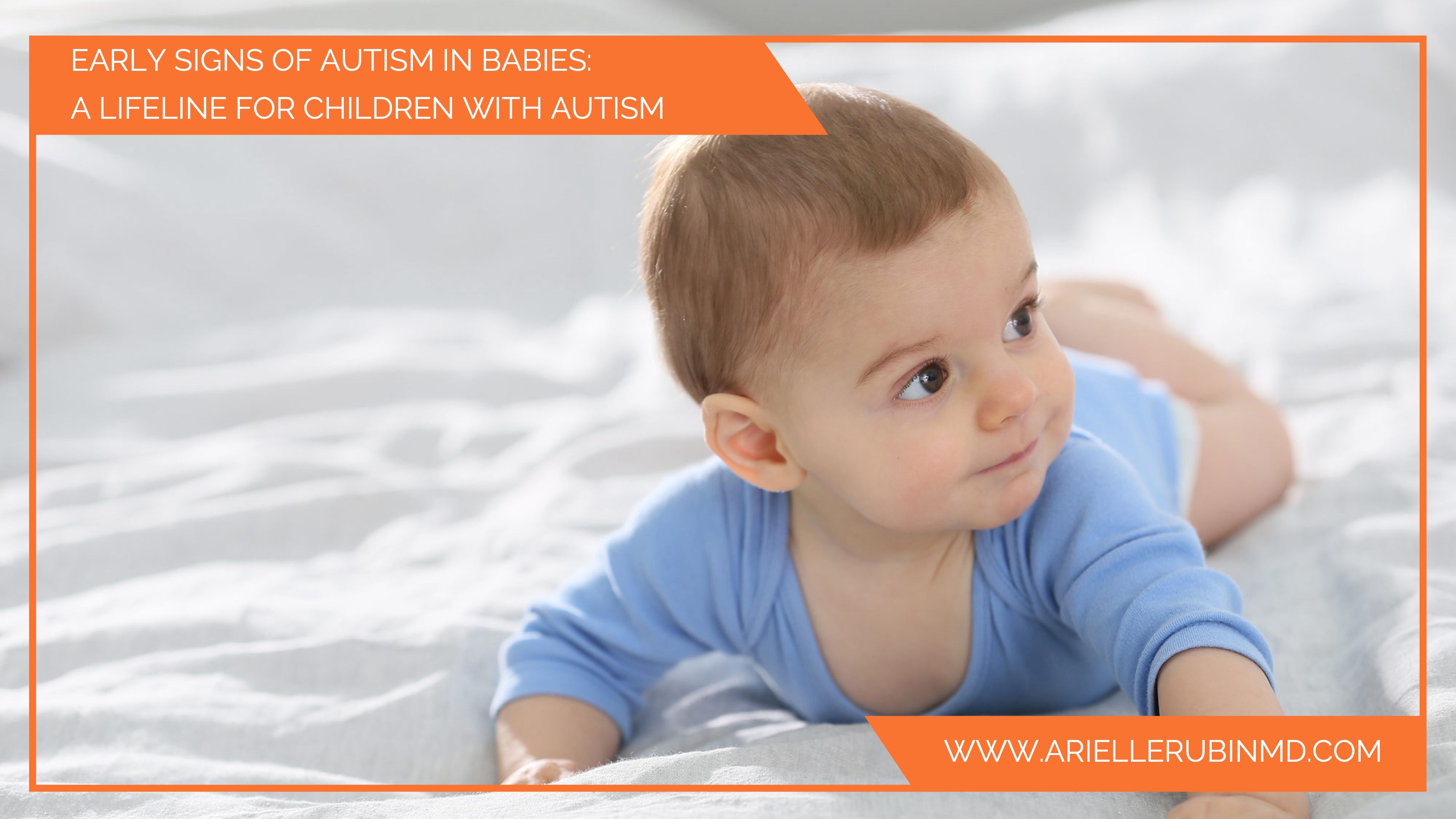Early Signs of Autism in Babies : A Lifeline for Children with Autism
Sep 26, 2023
Recognizing these early signs of autism is a critical step in providing the necessary support and intervention for a child's healthy development. While every child is unique and these signs by themselves do not mean a child has autism, they increase our alertness to monitor their development and provide appropriate early intervention services. Early detection allows for timely access to specialized support and therapies tailored to the child's specific needs.
1. Limited Eye Contact and Reduced Facial Expressiveness
One of the earliest signs of autism in babies is limited eye contact and reduced facial expressiveness. Typically developing infants begin making eye contact with their caregivers by around 2 months of age, responding with smiles and expressions of joy. However, babies with autism might exhibit less eye contact and may not display as many facial expressions during interactions. They may seem less engaged in social interactions and may not respond to their caregiver's smiles or attempts to engage them. These subtle differences in social behavior can be observed in the first few months of life.
2. Difficulty with Joint Attention
Joint attention is the ability to share an experience or focus on an object or event with others. Babies with ASD may struggle with joint attention, meaning they might not follow a parent's gaze or pointing finger to look at something interesting. For instance, when a caregiver points at a colorful toy or an exciting event, a typically developing baby will usually follow the pointing gesture with their eyes by 6 months of age. In contrast, a baby with autism may not exhibit the same interest or inclination to follow the caregiver's cues. This difficulty with joint attention can become apparent during the baby's first year of life.
3. Challenges with Imitation and Decreased Babbling
Imitation is a fundamental aspect of learning for babies, as it is how they acquire language and social skills. Babies with ASD may struggle with imitation, rarely attempting to mimic sounds and movements made by others. For example, they might not respond to a caregiver's smile with a smile of their own or engage in reciprocal interactions that involve imitation. Additionally, decreased babbling or vocalization can be an early sign of autism. Typically, babies begin to babble and make various vocal sounds to express themselves and communicate their needs between 4-6 months. However, babies with ASD might exhibit limited vocalization, which can be noticed in the first months of life.
Early Brain Changes Associated with Autism
Recent scientific studies have provided valuable insights into the early signs of autism and their connection to brain development, particularly in infants with a family history of autism. About one in five babies with an older sibling with autism will go on to develop autism. There are some common brain patterns we may see in babies. Currently, it is NOT standard practice to examine babies for autism, therefore the results below are purely research based. However, I think they are interesting for parents to know about, as they help explain some of the early signs discussed above.
1. Larger Brain Size
Research has shown that babies who have siblings with autistic traits tend to have larger brains. This observation is particularly intriguing because autism itself is associated with a larger brain size, especially during the first few years of life.
2. Differences in Visual Processing
Studies show differences in brain regions responsible for visual processing in babies with siblings exhibiting autistic traits. These differences in the brain's visual processing areas could be linked to the characteristic behaviors observed in babies with autism, such as limited eye contact and challenges with social interactions.
3. Genetic Factors and Brain Development
The research strongly suggests that genetic factors play a pivotal role in shaping the brain development of babies with a family history of autism. However, it's important to note that not all babies with these brain changes necessarily go on to develop autism. These findings highlight the complexity of autism and the need for further research to unravel its intricacies fully.
In conclusion, recognizing the early signs of autism in babies is a vital step in providing the support and intervention necessary for their healthy development. Limited eye contact, reduced facial expressiveness, difficulties with joint attention, challenges with imitation, and decreased babbling are some of the early indicators that parents and caregivers can watch for.
Furthermore, recent scientific studies have advanced our understanding of the relationship between early signs of autism and brain development.. By identifying these early signs and seeking timely support, we can pave the way for a brighter future for children on the autism spectrum.
Get notified when new blogs are posted and get exclusive insights by joining my weekly newsletter!

